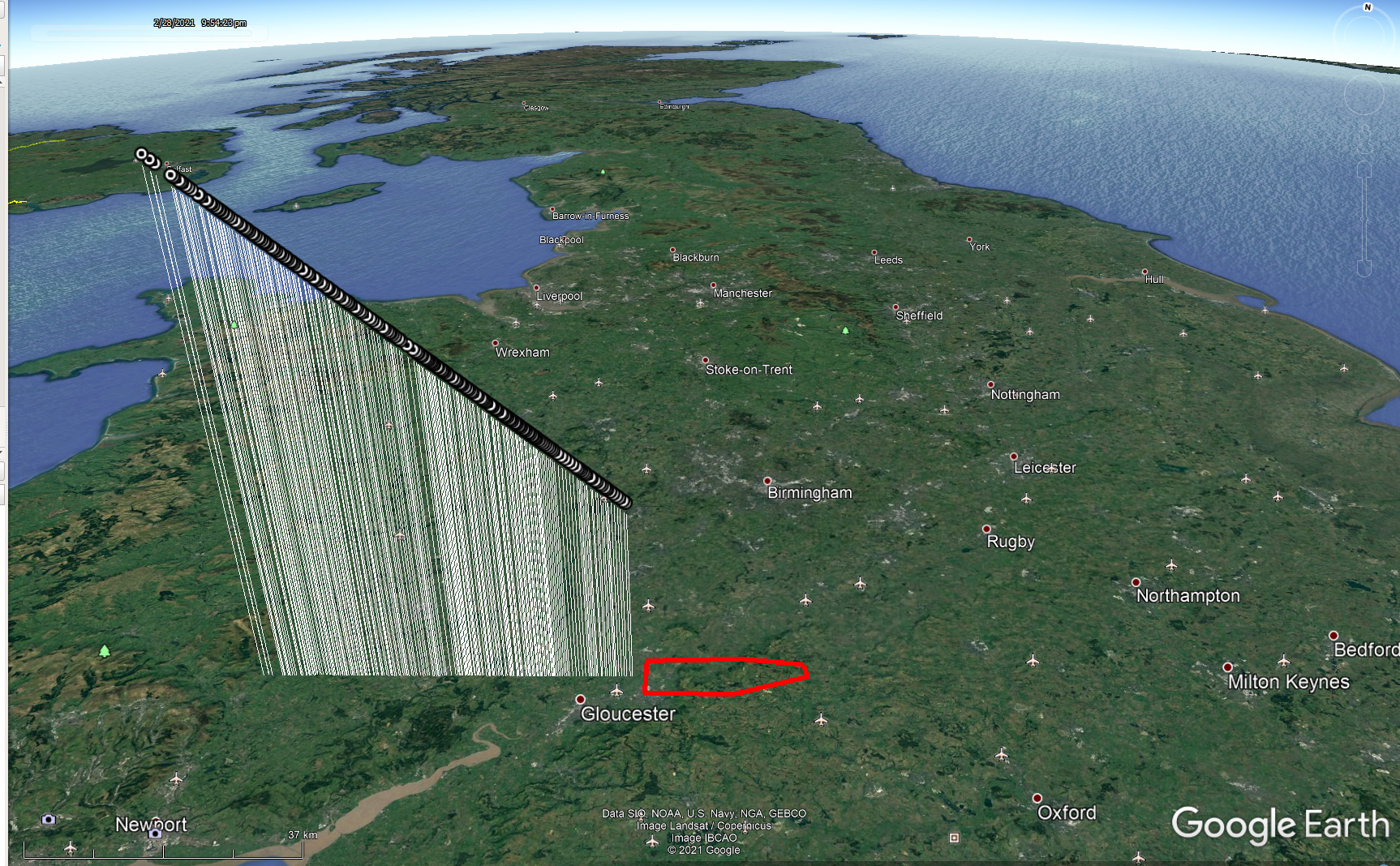Fireball lights up the night sky above UK as meteor breaks apart
Some pieces may have landed on Earth.

A massive fireball meteor briefly lit up the night sky above the U.K. on Sunday (Feb. 28) and was seen by a potentially record-breaking number of people.
The fireball flared across the sky at 9:54 p.m. local time over southwest England for around six seconds. Witnesses said the meteor emitted an unusually bright light that was seen across the U.K. and as far away as Ireland and the Netherlands. Some people in close proximity to the fireball also reported hearing a sonic boom. Experts estimate the asteroid was traveling at around 30,000 mph (48,278 km/h) when it hit the atmosphere and started to burn up, according to a statement by the U.K. Fireball Alliance (UKFall).
More than 800 people reported the meteor-sighting to the U.K. Meteor Observation Network — an amateur group of meteor watchers who contribute data to the International Meteor Organisation — and many also submitted videos captured by doorbell and security cameras. The sightings and footage might make it one of the most well-documented fireball meteors ever recorded on Earth, according to UKFall.
Related: Crash! 10 biggest impact craters on Earth
"I first thought it was a bright star or plane, then it got bigger & faster, then a huge flash lit up the sky & it burst into a massive tail of orange sparks trailing behind like a giant firework," one witness wrote on Twitter.
Due to its size and speed, the fireball may have left behind meteorites on the ground.

What is a fireball?
A fireball is another term for a very bright meteor, which has an apparent magnitude — the standardized measurement for the brightness of astronomical objects on a logarithmic scale — of minus 4 or below. Apparent magnitude is lower for brighter objects; for example, a full moon has a magnitude of minus12.6 and the sun is minus 26.7. Fireballs with a magnitude of minus 4 or below are brighter than Venus in the night sky, according to the American Meteor Society (AMS).
Sign up for the Live Science daily newsletter now
Get the world’s most fascinating discoveries delivered straight to your inbox.
Fireballs burns brightly thanks to the size and speed of the incoming object — most fireballs come from parent asteroids that are at least 3.3 feet (1 meter) across. As the asteroid hits our atmosphere, it slows down due to friction and heats up, releasing energy in the form of visible light.
"Most of the meteoroid vaporized during the six seconds of visible flight," Luke Daly, a UKFall scientist at the University of Glasgow, said in a statement. "However, with this one we think quite a few fragments probably reached the ground."
Several thousand fireball meteors burn through Earth's atmosphere every day, according to the AMS. However, most burn up over the oceans and other uninhabited areas, or they streak through the sky during the day when people can't see them. Only around 10 to 50 will reach the ground every day, and most will only end up as very small meteorites.
"Most are barely the size of a sugar cube," Sarah McMullan, a doctoral student at Imperial College London and part of UKFall, said in a statement. "However, two or three are bigger, and that's probably the case with this one."
Finding the fragments
Using the videos submitted by members of the public and their own camera network, UKFall members calculated the trajectory of the fireball and predicted a likely impact zone north of Cheltenham for the asteroid fragments. So far, nobody in the area has reported finding the meteorites.
From the meteor's trajectory through the atmosphere, UKFall scientists have retraced the object's journey through the solar system.
"The videos also allowed us to reconstruct its original orbit around the sun," Ashley King, a UKFall scientist at the Natural History Museum in London, said in the statement. "This particular piece of asteroid spent most of its orbit between Mars and Jupiter, though sometimes got closer to the sun than Earth is."
The hunt is now on to collect the meteorites before they become contaminated by rain or exposure to the atmosphere. UKFall scientists have encouraged people to not break COVID-19 lockdown protocols to go searching for the space rocks, but have given some advice on what to do if they are found.
"If you do find a meteorite on the ground, ideally photograph it in place, note the location using your phone GPS, don't touch it with a magnet, and, if you can, avoid touching it with your hands," Katherine Joy, a UKFall scientist at the University of Manchester, said in the statement.
Hopefully, uncontaminated meteorites can be handed off to researchers, who can analyze their structure to help unravel mysteries surrounding the formation of our solar system.
Originally published on Live Science.

Harry is a U.K.-based senior staff writer at Live Science. He studied marine biology at the University of Exeter before training to become a journalist. He covers a wide range of topics including space exploration, planetary science, space weather, climate change, animal behavior and paleontology. His recent work on the solar maximum won "best space submission" at the 2024 Aerospace Media Awards and was shortlisted in the "top scoop" category at the NCTJ Awards for Excellence in 2023. He also writes Live Science's weekly Earth from space series.










